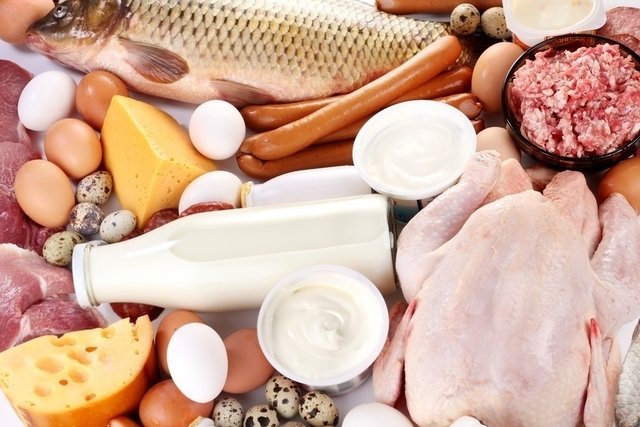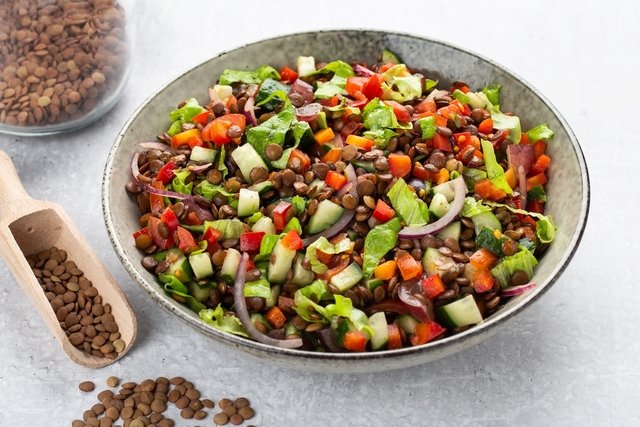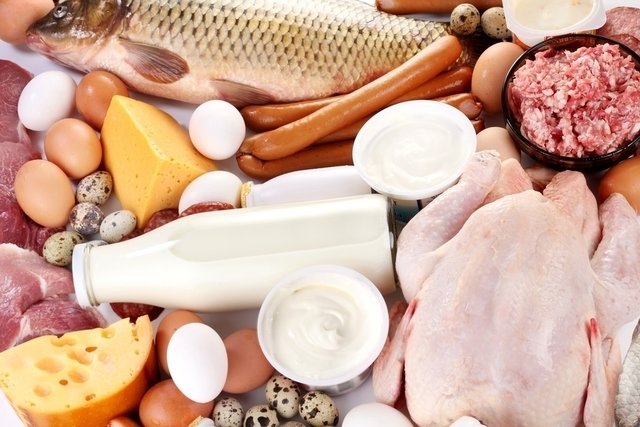Acidifying foods are those that, when digested in the stomach, generate acidic residues that increase metabolic acidity, which is the acidity produced in the body and eliminated through urine. This acidity produced by digestion can cause oxidative stress, increasing the risk of diseases such as flu, diabetes or obesity. Therefore, the consumption of these foods should be moderate, comprising a total of 40% of the diet.
It is important to remember that acidifying foods may not necessarily have an acidic pH, being called acidifying because they produce acidic residues in the body that reduce the metabolic pH.
Although it has not been proven that the consumption of acidifying foods changes the body’s pH, the consumption of this type of food should be moderated, especially soft drinks and processed products, as excess can contribute to the appearance of diseases such as type 2 diabetes, high blood pressure or cancer, for example.

Main foods
The main acidifying foods are:
1. Cereals
Cereals such as rice, couscous, wheat, corn, carob, buckwheat, oats, rye and wheat germ or foods prepared with these cereals, such as bread, pasta, cakes and French toast, are acidifying foods, as their digestion increases production of acidic waste in the body.
Despite being important for a balanced and healthy diet, these foods should be consumed in moderation, as they can contribute to the emergence of diseases such as diabetes, high blood pressure or cancer.
2. Milk and dairy products
Milk and its derivatives such as yogurt, cheese, cream or cream are foods that can also increase the production of acidic waste in the body, which can unbalance the immune system and cause diseases such as osteoporosis and high blood pressure.
However, the intake of milk and dairy products is important for the health of bones and muscles and, therefore, moderate consumption of these foods should be maintained.
3. Animal protein
Like other acidifying foods, animal proteins such as eggs, meat, fish, seafood and chicken can increase metabolic acidity, which can lead to loss of muscle mass, osteoporosis or kidney stones.
When in excess, animal proteins can increase the production of acidic waste in the body. Therefore, the intake of these foods should be done, but in moderate quantities.
4. Legumes
Legumes such as beans, lentils, chickpeas and soybeans are foods that, when digested, also have the potential to lower pH and acidify the body.
Despite being acidifying foods, legumes have a low amount of fat and are also rich in fiber, minerals and proteins, and their daily intake is recommended, but avoiding excess.
5. Processed foods
Mayonnaise, ketchup, chocolate, refined sugar, margarine, sausage, mortadella, soft drinks, processed juices and alcoholic beverages are just some of the processed foods that increase the body’s metabolic acidosis.
These foods generally also contain saturated fat, sugar and chemical additives that favor the emergence of diseases such as diabetes, obesity and high blood pressure and, therefore, their consumption should be avoided.
Acidifying vs alkalizing foods
Unlike acidifying foods, alkalizing foods, such as fruits, vegetables, vegetable fats and herbs and spices, are those that reduce the production of acidic waste that is eliminated through urine.
Excessive intake of acidifying foods can increase the production of acidic waste that is released in the urine, generating oxidative stress and contributing to the onset of diseases such as cancer and high blood pressure, for example.
There is still no proof that food intake can change the body’s pH. Therefore, it is important to have a consultation with a nutritionist, so that an assessment and personalized food planning can be carried out.
Are fruits acidic foods?
Although most fruits have a more acidic flavor, they are considered alkalizing foods, as they help reduce acid levels in the body. However, some fruits can worsen some gastrointestinal symptoms related to ulcers or gastroesophageal reflux.
How to include acidifying foods in your diet
Acidifying foods are also important and can be included in the diet, however, they should only comprise 40% of the diet, with the remaining 60% of foods being alkalizing. See a list of the main alkalizing foods.
When including acidic foods, you should prefer those that are natural and little processed, such as beans, lentils, eggs, yogurt or milk, as they are necessary for the body, while processed foods, such as refined sugar, sauces and white flours should be avoided.
A more alkaline diet, rich in fruits, vegetables and natural foods, contains vitamins, minerals and antioxidants that allow the body to balance metabolic pH, contributing to strengthening the immune system and preventing the emergence of diseases such as diabetes, osteoporosis and obesity . Learn how to follow an alkaline diet.
Healthy recipes with acidifying foods
Acidifying foods can be consumed daily, but in moderation and together with alkalizing foods. Some examples of recipes that respect this balance between alkalizing and acidifying are:
1. Vegetable omelet

Ingredients:
- 1 ovo;
- 50 g of spinach;
- 30 g of fresh mushrooms;
- 3 cherry tomatoes;
- 1 tablespoon of extra virgin olive oil;
- oregano and black pepper to taste.
Preparation mode:
Beat the egg in a bowl. Add the spinach cut into pieces, tomatoes, mushrooms and seasonings, mixing carefully. Heat the oil in a frying pan and pour in the mixture. Let it cook over low heat for up to 2 minutes or until the omelet comes away from the bottom and turns over to the other side, cooking for another 2 minutes.
2. Lentil salad

Ingredients:
- 50 g of lentils;
- ¼ seedless tomato, chopped;
- ¼ chopped seedless yellow pepper;
- ¼ chopped seedless green pepper;
- ¼ chopped onion;
- 1 teaspoon of chopped chives;
- 1 teaspoon of chopped parsley;
- 1 teaspoon of extra virgin olive oil;
- 1 bay leaf;
- Lemon juice to taste;
- Black pepper to taste.
Preparation mode:
Leave the lentils to soak in water overnight. Drain the water and cook the lentils in water, with the bay leaf, for 2 minutes after starting to boil. Drain the water and let the lentils cool. In a bowl, place the lentils and the other ingredients, mixing well and serve.

Sign up for our newsletter and stay up to date with exclusive news
that can transform your routine!
Warning: Undefined array key "title" in /home/storelat/public_html/wp-content/plugins/link-whisper-premium/templates/frontend/related-posts.php on line 12
Warning: Undefined array key "title_tag" in /home/storelat/public_html/wp-content/plugins/link-whisper-premium/templates/frontend/related-posts.php on line 13




